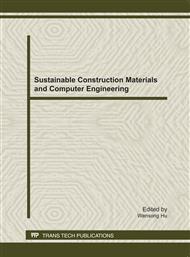p.122
p.128
p.136
p.141
p.148
p.154
p.161
p.166
p.172
Effect of Rare Earth Ce Addition on Microstructure and Properties of WCu Contact Materials
Abstract:
In order to clarify the effect of rare earth Ce on the microstructure and properties of WCu contact materials, different contents of Ce were introduced into W skeleton, and the relative density and compression stress of the pre-sintered W skeletons were tested. Subsequently, WCu contact materials with different contents of Ce were prepared by infiltration method. The hardness, electrical conductivity and the compression stress of WCu contact materials were tested, and the microstructure and composition were characterized by a scanning electron microscope equipped with an energy dispersive spectrometer. The results show that rare earth Ce can purify W/W interface and promote the densification of W skeleton, enhance the bonding of Cu/W, and improve the integral properties of WCu contact materials. In the range of experiments, WCu contact materials with 0.30wt%Ce addition has the maximum hardness of 215HB and the maximum compression stress of 900N/mm2, which are respectively increased by 23.60% and 57.20% in comparison with that without Ce addition.
Info:
Periodical:
Pages:
148-153
Citation:
Online since:
September 2011
Authors:
Price:
Сopyright:
© 2012 Trans Tech Publications Ltd. All Rights Reserved
Share:
Citation:


